Kragujevac is a historical, economical, administrative, cultural, science, educational, health and industrial center of the Šumadija region in Serbia. It is located in central Šumadija and Serbia, 140km south of the capital city of Belgrade. The city spans along the banks of the river Lepenica in the Kragujevac valley, surrounded by Rudnik, Crni vrh and Gledić mountains, at 200m above sea-level. The city is home to around 190 000 residents.
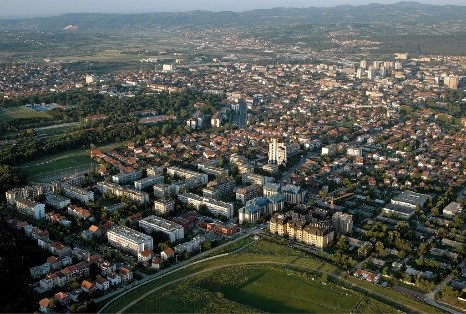
Panorama of Kragujevac

Coat of arms
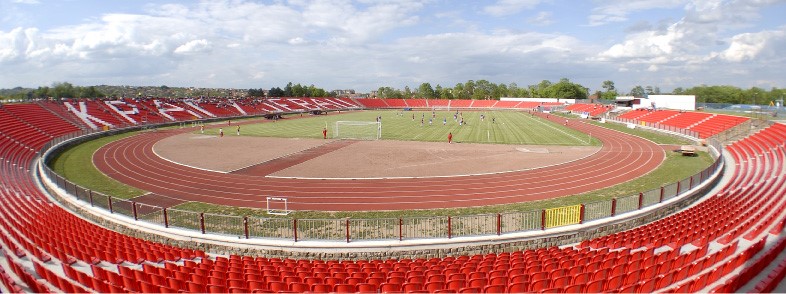
Čika Dača Stadium
A sure sign that you have stepped into the former capital of Serbia is the cross, which bares the icon of St. George killing the dragon on the back, which represents the cities patron saint.

City Hall
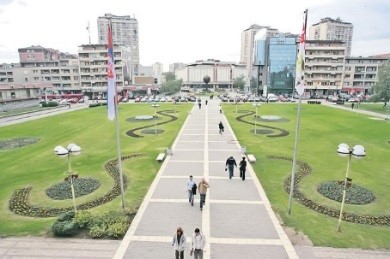
City
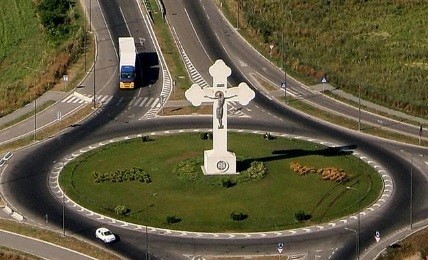
Entrance to the city
The city is fist mentioned in the middle ages, and the first written sign of it comes from 1476 where in Ottoman documents it is called Karagovindja, a town “on the Belgrade road 19 days away from Constantinople”. It got its name from the kraguj sparrowhawk which was hunted in the middle ages, today extinct, it finds its honorary place on the city’s coat of arms.
Culturally- historical heritage of Kragujevac was greatly determined by the fact that in the period between 1818-1841 it was the capital, cultural, educational and political center of modern Serbia. At the Djurdjevdan assembly at the monastery of Vracevsnica, on the 6th of May 1818, Knez Miloš Obrenivić proclaimed the city of Kragujevac for the capital of the new Serbian nation. A church (now called the old church) is erected across from Miloš’s court, on the right bank of Lepenica which was the first building made from hard material in Kragujevac as a capital.
The new center is built by Miloš on the location of today’s National museum, Small park and Old church which started the urban planning of the city. Kragujevac soon expanded to the left bank of the Lepenica river and at that time had 193 houses, only a few years later in 1832 to have 600 houses and over 2000 residents.
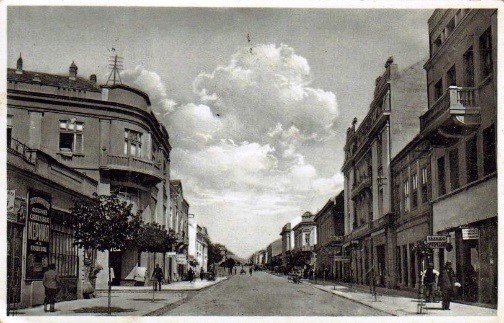
Main street
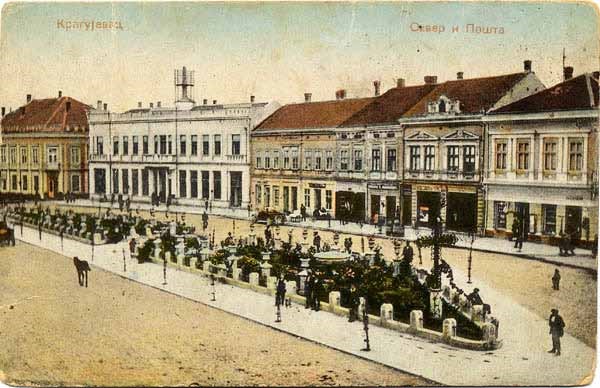
City Square and Post Office 1929.

Congregational church
Under the guidance of Miloš Obrenović, the first institutions of this modern country were founded: a primary school (1807), Gymnasium (1833) or middle school, theater (1835) under the administration of Joakim Vujić, art gallery, library, courthouse (1820), pharmacy (1822), general trade school (1845), arms manufacturing trade school (1854.), teachers school (1870.). In this period in Kragujevac Licej (1838) was founded as the first higher learning and research institution in Serbia and is the predecessor of the University of Belgrade. The first Rector of the Licej was Anastasije Nikolić. The Licej is turned into a college in 1863, and then the University of Belgrade in 1905.
Here, the foundation of the modern Serbian nation are made in 1835 with the first Serbian Constitution , in 1870 the first law for printing, in 1878 the provisions of the Berlin congress were published here according to which Serbia became an independent state.
The arrival of Jozif Šlizinger in Serbia and founding the first band in 1831 in Kragujevac marks the start of musical life in modern Serbia. The first Serbian lottery was in 1834, coinciding with the fist national printing press opening and the first newspaper “Novina Srbskih” being published under the editor Dimitrije Davidović.
The first Watchmakers shop in Serbia was opened in Kragujevac in 1835, and in 1836 the building of a laboratory for the first national pharmacy in Serbia was started.
The first light bulb in Serbia shined in 1884 in Kragujevac at the Army-technical institute in the presence of King Milan Obrenivić and Queen Natalija, marking the start of electrification in Serbia.
In place of the old post office in 1887 the most modern hotel in the Balkan region, hotel “Takovo” was built, named after a township in which Miloš started the Second Serbian Uprising on April 11th 1805. Since 1904 Kragujevac gets its drinking water from Trmbas making it one of the few cities in Serbia at the time to have waterdistribution from a waterworks.
Kragujevac was the birthplace or workplace of many notable serbian citizens.
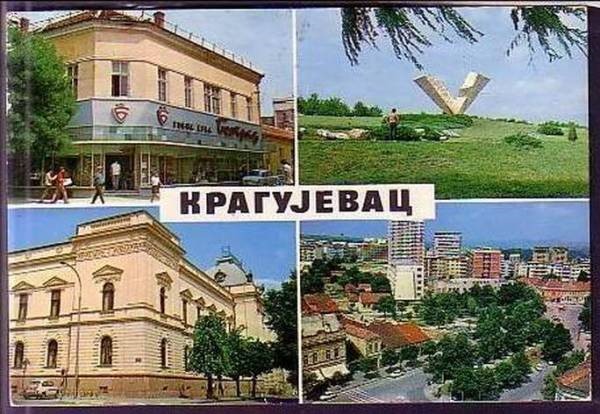
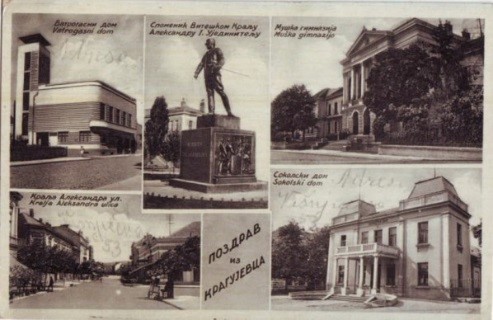
Old Kragujevac
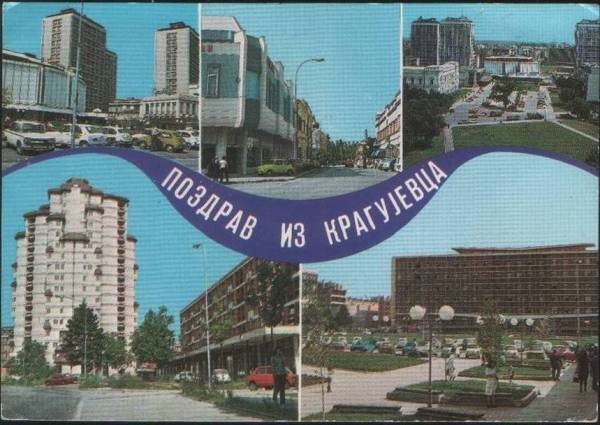
The turning point of industrial and economic development of Kragujevac came in 1851, when the cannon foundry was moved from Belgrade to Kragujevac, and the first six cannons were cast in Kragujevac on October 15th 1853. From the cannon foundry, the army institute to the first car factory (1853), Kragujevac rapidly developed in the post war years, later to become an industrial and trade center, center of automotive and arms industry, chain manufacturer, etc. Today, the tradition of the largest center of the automotive industry in Serbia is continued with the arrival of FCA to Serbia in 2008.

Cannon founder square
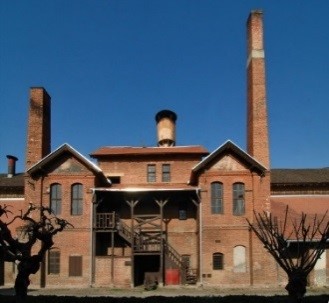
Cannon foundry
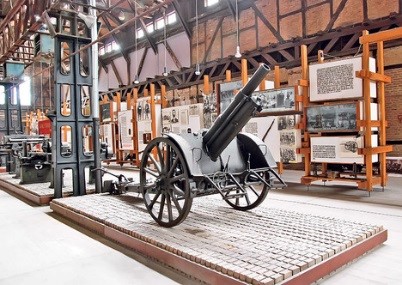
Museum of old foundry
The city is home to the old church, congregational church, National Museum, Amidža’s court, old assembly building, museum of the old foundry, Memorial Park “Kragujevački oktobar” and many other cultural monuments.
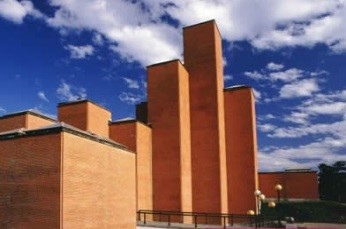
Museum “ 21 Oktobar”
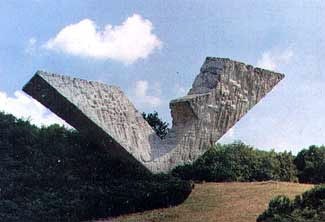
Monument of executed students
During the World War I Kragujevac was the siege city in which the regent Aleksandar Karađorđević resided and was the location of the Serbian army high command led by Radomir Putnik.
In World War II, the city faces new destruction in one of the greatest tragedies – the mass execution of citizens, amongst which were 300 students from the Gymnasium on October 21st 1941.
From 1991, the city of Kragujevac is a member of the International Association of Peace Messenger Cities, an honor bestowed by the United Nations.
The rapid development of Kragujevac warranted the development of educational institutions (primary and secondary schools, colleges and faculties and universities).
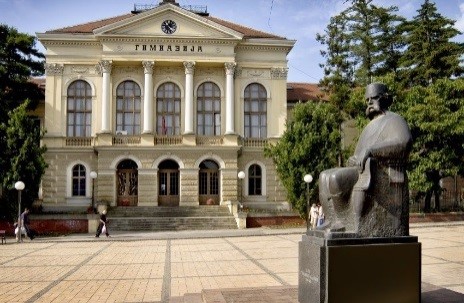
First secondary school – Gymnasium
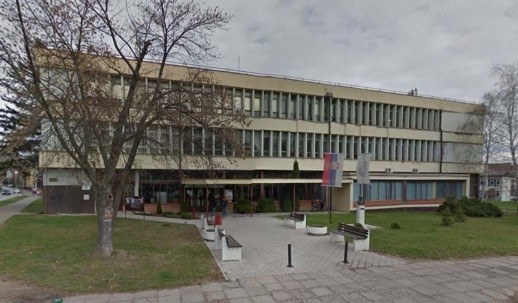
Faculty of Engineering

University of Kragujevac
The Faculty of Mechanical Engineering in Kragujevac was formed on the initiative former Kragujevac County at the Faculty of Mechanical Engineering in Belgrade, by the statute of the Executive committee of the National assembly of the People’s Republic of Serbia from October 1st 1960 as a section of the Faculty of Mechanical Engineering in Belgrade. Faculty of Mechanical Engineering in Kragujevac became an independent faculty as part of the University of Belgrade on December 2nd 1971. For exemplary achievements and merit in education of specialists and scientists, contribution to commercial development and advancement of the nation as well as other results, the Faculty was awarded with the Medal of Merit for the people with silver rays (1985), and in 2010 received the Plaque of St. George which was awarded by the Mayor of Kragujevac. The government of Serbia, on July 28th 2011, brought a decision to change the name from Faculty of Mechanical Engineering to Faculty of Engineering. The “Svetozar Marković” University, today University of Kragujevac was founded May 21st 1976. The first rector was Milan Vesović PhD, a professor from the Faculty of Mechanical Engineering in Kragujevac. The University today consists of 12 faculties.














